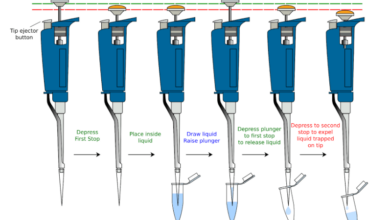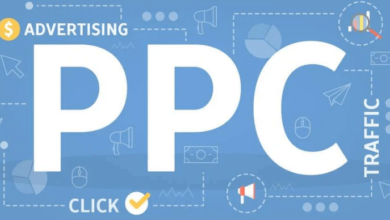Sustainable Switch: A Small Business Guide to Eco-Friendly Packaging

In today’s world, where sustainability is at the forefront of consumer consciousness, businesses of all sizes are striving to make eco-friendly choices. One area where small businesses can make a big impact is in their packaging practices. By switching to eco-friendly packaging, small businesses can not only reduce their environmental footprint but also appeal to eco-conscious customers. In this guide, we will explore the importance of eco-friendly packaging, how to assess your current practices, and various sustainable packaging options available for small businesses. We will also discuss the costs involved and offer tips for making a smooth transition. Additionally, we will highlight the importance of effectively communicating your sustainability efforts to customers and explain how to measure the environmental benefits of adopting sustainable packaging.
Understanding the Importance of Eco-Friendly Packaging
Before delving into the specifics, let’s first understand why eco-friendly packaging is so essential. In a world grappling with climate change and plastic pollution, consumers are increasingly mindful of the environmental impact of their purchases. By adopting eco-friendly packaging practices, small businesses can position themselves as responsible stewards of the environment, gaining the trust and loyalty of eco-conscious consumers. Moreover, sustainable packaging can also save costs in the long run and enhance a company’s reputation.
When considering eco friendly sticker packaging, it’s crucial to take into account the materials used. Opting for biodegradable or recyclable materials such as cardboard, paper, or compostable plastics can significantly reduce the carbon footprint of a product. Not only does this help in minimising waste and pollution, but it also contributes to the conservation of natural resources. Additionally, eco-friendly packaging can be creatively designed to enhance the unboxing experience for customers, adding value to the overall product presentation.
Furthermore, the shift towards sustainable packaging is not just a trend but a necessity in today’s global scenario. Governments and regulatory bodies are increasingly imposing stricter regulations on packaging waste and encouraging businesses to adopt greener practices. Embracing eco-friendly packaging is not only a proactive step towards environmental conservation but also a strategic business decision that can lead to long-term benefits for both the company and the planet.
See also: Tropical Bliss: Your Ultimate Guide to Spring Travel in Bangkok
Assessing Your Current Packaging Practices
Assessing your current packaging practices is a vital step in understanding the environmental impact of your operations. It goes beyond just the materials you use; it involves a holistic review of your entire packaging process. This includes not only the direct materials like boxes and wrapping but also the indirect resources such as energy and water consumption during production.
One aspect to consider is the transportation of your products. How are they packaged for shipping? Are there opportunities to consolidate packages or use more efficient packing techniques to reduce the carbon footprint of your deliveries? Optimising the way your products are packed for transit can lead to significant reductions in emissions and costs, contributing to a more sustainable supply chain overall.
Assessing your packaging practices also extends to the end of the product life cycle. What happens to the packaging once the product is delivered? Is it easily recyclable or compostable? Thinking about the disposal phase upfront can guide you towards choosing materials that align with a circular economy model, where resources are kept in use for as long as possible.
Exploring Sustainable Packaging Options
The market offers a range of sustainable packaging options that small businesses can embrace. Firstly, consider using recycled materials. Cardboard boxes made from recycled paper or corrugated cardboard can provide excellent protection for your products while minimizing environmental impact. Recycled plastic, such as PET, can also be a viable option, particularly for items that require airtight or water-resistant packaging.
Another sustainable packaging option is biodegradable materials. Bioplastics, which are made from renewable resources such as cornstarch or sugarcane, can break down naturally over time, reducing the accumulation of non-biodegradable plastic waste. When choosing bioplastics, ensure they meet recognized certifications for compostability. Alternatively, explore packaging materials derived from plant fibers, such as bamboo or mushroom-based packaging, which offer excellent eco-credentials.
If your business involves shipping fragile items, consider using packaging fillers made from sustainable sources. Air pillows made from biodegradable materials or shredded paper can provide cushioning while avoiding the use of polluting materials like polystyrene foam.
When considering sustainable packaging options, it’s essential to also think about the end-of-life disposal process. Opting for packaging that is easily recyclable or compostable can help reduce the overall environmental impact. Additionally, choosing packaging materials that are lightweight can contribute to lower transportation emissions, further enhancing the sustainability of your packaging choices.
Furthermore, embracing sustainable packaging can also have a positive impact on your brand image. Consumers are becoming increasingly conscious of environmental issues and are more likely to support businesses that demonstrate a commitment to sustainability. By incorporating eco-friendly packaging solutions into your operations, you can attract environmentally conscious customers and differentiate your brand in a competitive market.
Cost Considerations: Investing in Eco-Friendly Packaging
Switching to eco friendly sticker packaging may involve an initial investment, but the long-term benefits make it a worthwhile endeavour. While sustainable packaging materials may be slightly more expensive upfront, they often offer cost savings in other areas. For instance, using smaller packaging dimensions can reduce shipping costs, and recycling materials can lower waste disposal fees. Moreover, by positioning your business as environmentally conscious, you may attract additional customers who are willing to pay a premium for sustainable products.
Furthermore, investing in eco-friendly packaging can also lead to improved brand reputation and customer loyalty. Consumers are becoming increasingly aware of environmental issues and are more likely to support businesses that demonstrate a commitment to sustainability. By using biodegradable or recyclable materials, you not only reduce your carbon footprint but also show your customers that you care about the planet and their well-being. This can result in a stronger emotional connection with your brand and increased customer retention.
Communicating Your Sustainability Efforts to Customers
Once you have implemented eco-friendly packaging practices, it is crucial to effectively communicate your sustainability efforts to customers. Consider incorporating messaging on your packaging that highlights your eco-friendly choices. Use clear language that conveys the environmental benefits of your packaging and educates customers about how to properly dispose of materials. Additionally, leverage digital platforms and social media to share your sustainability journey, showcasing the steps you are taking to reduce your carbon footprint. By keeping customers informed, you can build trust and foster loyalty.
Furthermore, hosting sustainability workshops or webinars can be a fantastic way to engage with your customers on a deeper level. These events can provide valuable insights into your sustainability practices, allowing customers to ask questions and gain a better understanding of your commitment to the environment. It also creates a sense of community among like-minded individuals who share a passion for sustainability.
Another effective method to communicate your sustainability efforts is through collaborations with environmental organisations or charities. By partnering with reputable entities in the sustainability sector, you can amplify your message and reach a wider audience. This not only enhances your brand’s credibility but also demonstrates a genuine dedication to making a positive impact on the planet.
Tips for Making the Transition to Eco-Friendly Packaging Smooth
Making the switch to eco friendly packaging is an exciting but challenging process. To ensure a smooth transition, consider the following tips:
Transitioning to eco-friendly packaging is not just a trend but a necessity in today’s world where environmental concerns are at the forefront of consumer consciousness. Embracing sustainable packaging practices not only benefits the planet but also enhances your brand’s reputation as a responsible and forward-thinking entity.
- Educate your team: Train your employees about the importance of sustainable packaging and provide them with the knowledge and tools needed to implement the changes effectively.
- Engage suppliers: Collaborate with your suppliers to identify sustainable packaging options. Encourage them to embrace leverage eco friendly stickers and packaging practices and materials.
- Start small: Begin by making gradual changes to your packaging. This approach allows you to test different strategies and assess their impact before implementing them on a larger scale.
- Solicit feedback: Gather feedback from customers regarding the new packaging. Use this information to make further improvements and address any concerns or suggestions.
Furthermore, investing in eco-friendly packaging can lead to cost savings in the long run. While the initial switch may require some financial investment, the efficiency and positive brand image gained from sustainable practices can result in increased customer loyalty and reduced environmental impact.
Measuring the Impact: Tracking the Environmental Benefits of Sustainable Packaging
Lastly, it is essential to measure the impact of your sustainable packaging initiatives. Tracking key metrics, such as the reduction in waste, water usage, and carbon emissions, can help you demonstrate the positive environmental outcomes of your eco-friendly practices. Moreover, sharing this data with stakeholders showcases your commitment to sustainability and supports informed decision-making for future packaging improvements.
By following this comprehensive guide, small businesses can successfully transition to eco-friendly packaging practices. Not only will these changes benefit the environment, but they will also enhance your brand’s reputation and appeal to eco-conscious consumers. Make the sustainable switch and position your business for long-term success in a world that values environmentally responsible practices.
When it comes to sustainable packaging, one key aspect to consider is the choice of materials. Opting for biodegradable or recyclable materials can significantly reduce the environmental impact of your packaging. Biodegradable materials break down naturally, minimising harm to the environment, while recyclable materials can be reprocessed and used again, promoting a circular economy.
Furthermore, the design of your packaging plays a crucial role in its sustainability. Implementing efficient and minimalist designs not only reduces material usage but also lowers transportation costs and carbon emissions. Consider innovative packaging solutions such as reusable packaging or packaging made from renewable sources to further enhance your eco-friendly efforts.




